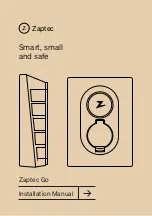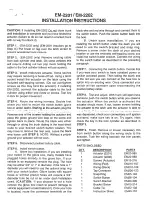
around the child restraint so that it is not necessary to
use a locking clip. If the seat belt has a cinching latch
plate, pulling up on the shoulder portion of the
lap/shoulder belt will tighten the belt. The cinching
latch plate will keep the belt tight, however, any seat
belt system will loosen with time, so check the belt
occasionally and pull it tight if necessary. If the seat
belt has a automatic locking retractor, it will have a
distinctive label. Pull the belt from the retractor until
there is enough to allow you to pass through the child
restraint and slide the latch plate into the buckle. Then,
pull the belt until it is all extracted from the retractor.
Allow the belt to return to the retractor, pulling on the
excess webbing to tighten the lap portion about the
child restraint. Refer to
⬙
Automatic Locking Mode
⬙
earlier in this section.
•
Buckle the child into the restraint exactly as the
manufacturer’s instructions tell you.
•
When your child restraint is not in use, secure it in the
vehicle with the seat belt or remove it from the vehicle.
Do not leave it loose in the vehicle. In a sudden stop or
collision, it could strike the occupants or seat backs
and cause serious personal injury.
LATCH - Child Seat Anchorage System (Lower
Anchors and Tether for CHildren)
Your vehicle’s second row seat is equipped with the child
restraint anchorage system called LATCH. The LATCH
system provides for the installation of the child restraint
without using the vehicle’s seat belts, instead securing
the child restraint using lower anchorages and upper
tether straps from the child restraint to the vehicle
structure. LATCH-compatible child restraint systems are
now available. However, because the lower anchorages
are to be introduced over a period of years, child restraint
systems having attachments for those anchorages will
continue to also have features for installation using the
vehicle’s seat belts. Child restraints having tether straps
THINGS TO KNOW BEFORE STARTING YOUR VEHICLE
57
2
Summary of Contents for 2005 Durango
Page 2: ......
Page 62: ...Second Row Seat 62 THINGS TO KNOW BEFORE STARTING YOUR VEHICLE...
Page 68: ......
Page 98: ...98 UNDERSTANDING THE FEATURES OF YOUR VEHICLE...
Page 99: ...UNDERSTANDING THE FEATURES OF YOUR VEHICLE 99 3...
Page 100: ...100 UNDERSTANDING THE FEATURES OF YOUR VEHICLE...
Page 120: ...LIGHTS 120 UNDERSTANDING THE FEATURES OF YOUR VEHICLE...
Page 162: ...INSTRUMENTS AND CONTROLS 162 INSTRUMENT PANEL AND CONTROLS...
Page 163: ...Instrument Cluster INSTRUMENT PANEL AND CONTROLS 163 4...
Page 211: ...Operating Tips Chart INSTRUMENT PANEL AND CONTROLS 211 4...
Page 214: ......
Page 247: ...STARTING AND OPERATING 247 5...
Page 304: ...ENGINE COMPARTMENT 3 7L V6 304 MAINTAINING YOUR VEHICLE...
Page 305: ...ENGINE COMPARTMENT 4 7L V 8 MAINTAINING YOUR VEHICLE 305 7...
Page 306: ...ENGINE COMPARTMENT 5 7L HEMI V 8 306 MAINTAINING YOUR VEHICLE...
Page 382: ......
Page 388: ...U S Vehicles Only 388 IF YOU NEED CONSUMER ASSISTANCE...
Page 392: ......
Page 393: ...INDEX 10...
Page 411: ...NOTES...
Page 412: ...NOTES...
Page 413: ...NOTES...
Page 414: ...NOTES...
Page 415: ...NOTES...
Page 416: ...NOTES...
















































